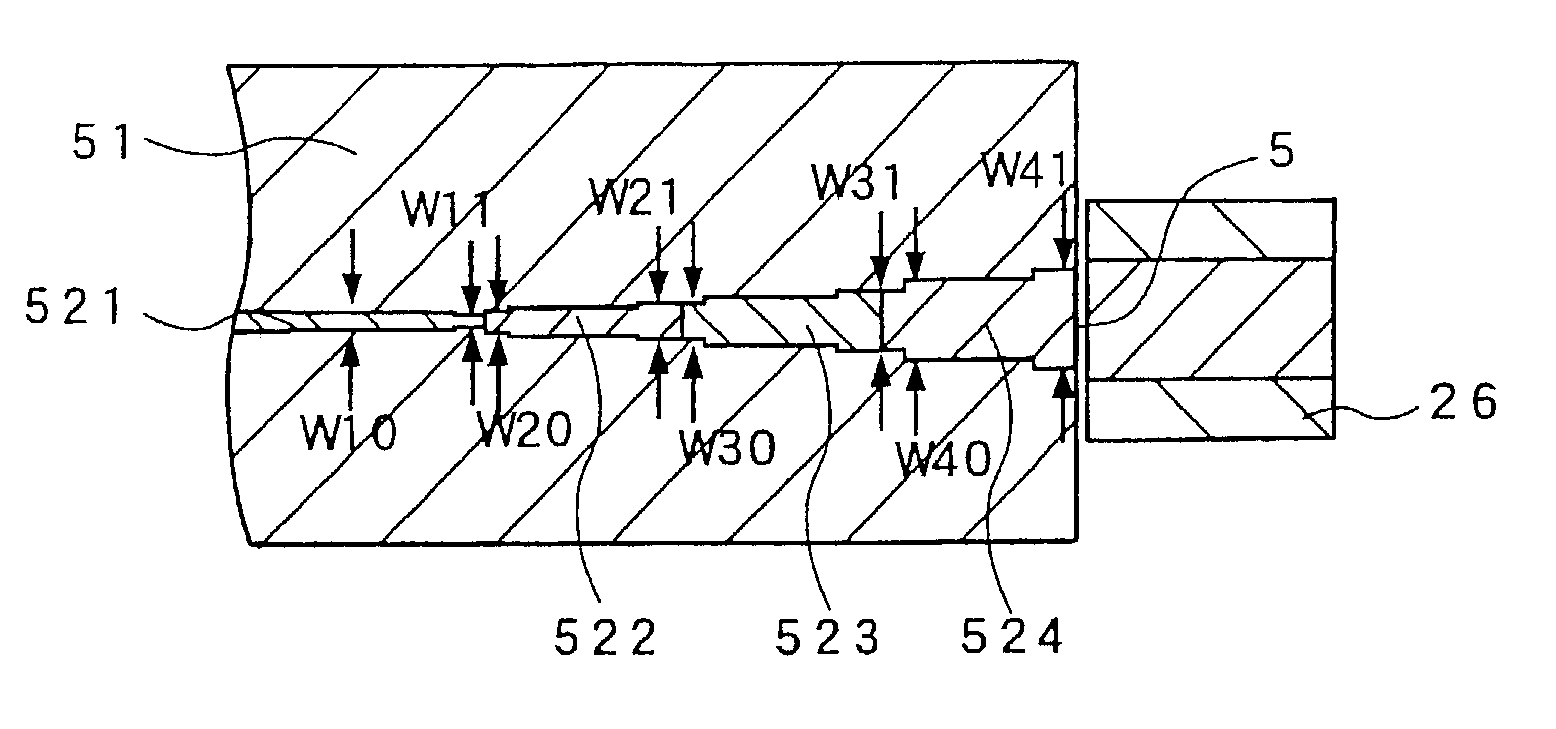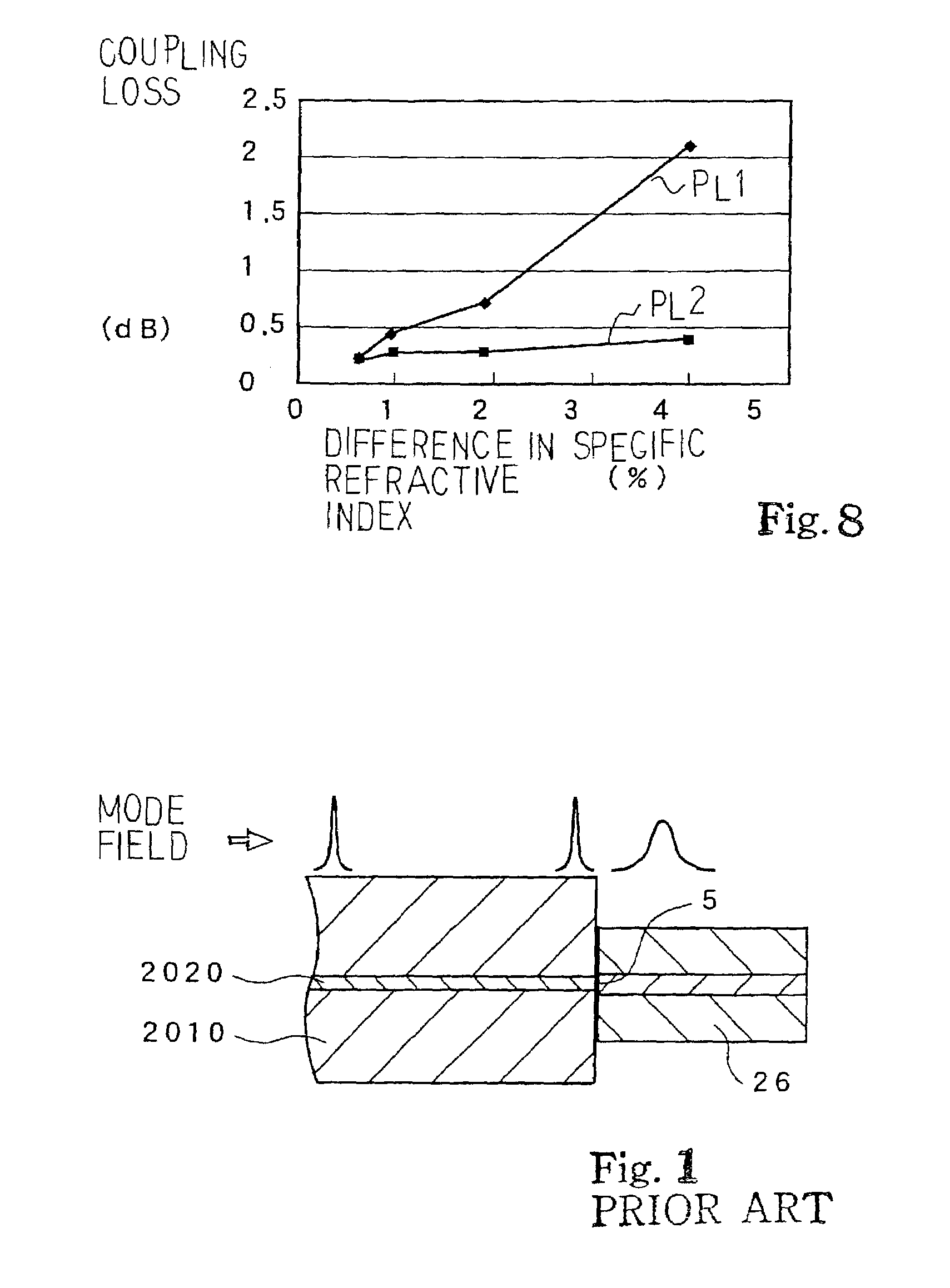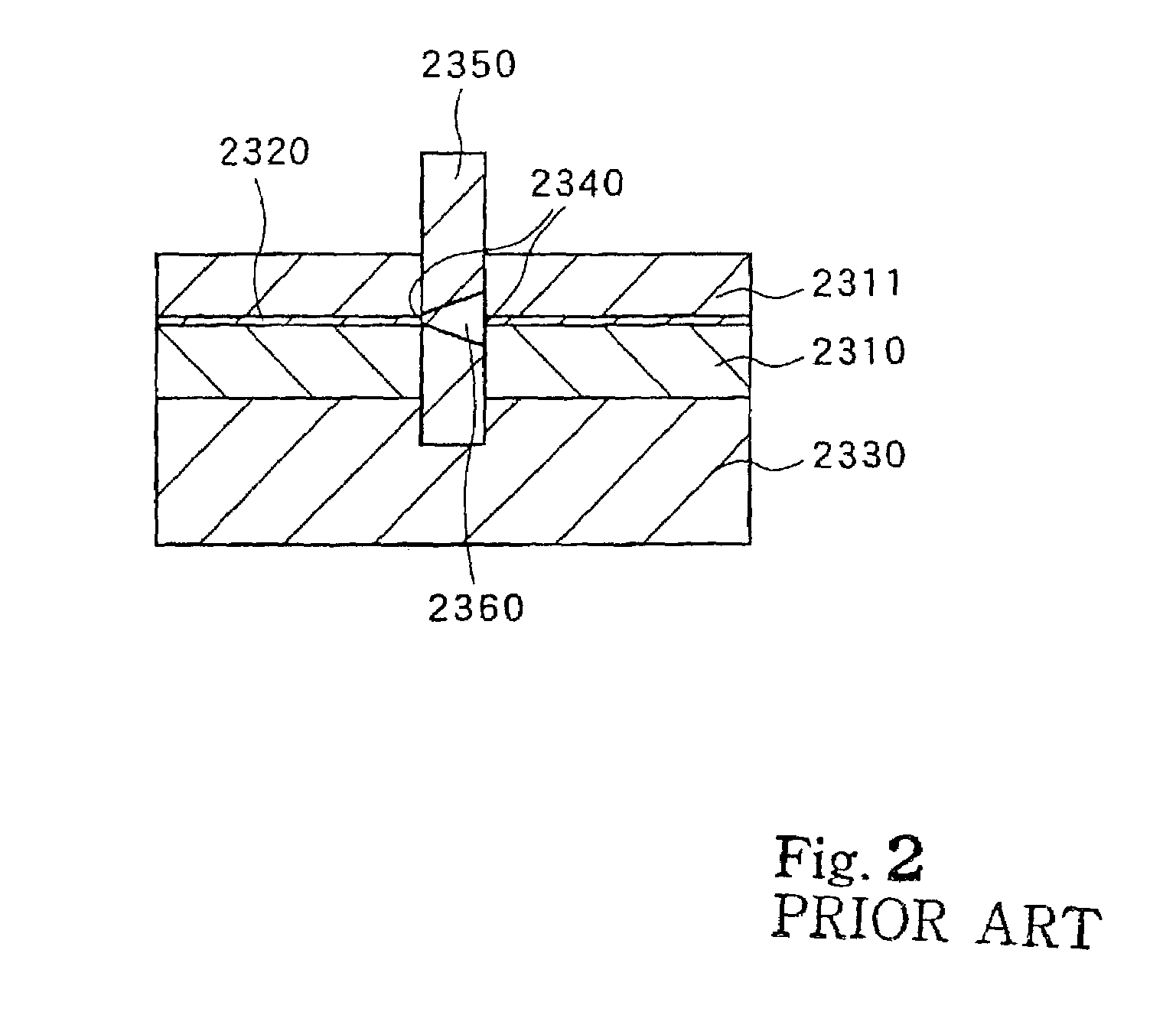Optical coupling device and process for fabrication thereof
a coupling device and optical technology, applied in the field of optical devices, can solve the problems of large coupling loss, narrow spot size, increased coupling loss, etc., and achieve the effect of reducing spot size and increasing coupling loss
- Summary
- Abstract
- Description
- Claims
- Application Information
AI Technical Summary
Benefits of technology
Problems solved by technology
Method used
Image
Examples
first embodiment
[0062]Referring to FIG. 5A of the drawings, an optical coupling device embodying the present invention is formed with the first optical wave-guides 11, second optical wave-guide 12, . . . (n−1)th optical wave-guide 13 and nth optical waveguide 14, and has an end surface 5. The optical coupling device is cut off along a certain horizontal cross-section so that the FIG. 5A is a plan view showing the certain horizontal cross-section. The nth optical wave-guide is exposed to the end surface 5 so that the output light is radiated from then nth optical wave-guide on the end surface 5. In this instance, the core layers of the first optical wave-guide 11 to then nth optical wave-guide 14 are equal in width to one another. However, the core layers may vary the width depending upon the specific refractive index thereof.
[0063]The first optical wave-guide 111 has the first clad layer 111 and the first core layer 112, the second optical wave-guide 12 has the second clad layer 121 and the second ...
second embodiment
Samples of Second Embodiment
[0097]FIG. 17A shows a sample of the optical coupling device implementing the second embodiment. The cross section was in parallel to the major surface of the substrate so that FIG. 17A shows the cross section. The sample is hereinbelow referred to as “first sample”. The optical coupling device had an optical wave-guide consisting of four wave-guides 71, 72, 73 and 74, and the wave-guide 74 was coupled to a semiconductor optical element 76. The semiconductor element 76 served as a semiconductor spot size converting optical amplification element. The distance between the end surface 5 and the semiconductor optical element 76 was 5 microns.
[0098]The substrate was made of silicon. The lower and upper clad layer 711 / 721 / 731 / 741 were made of GPSG, and the core layers 712 / 722 / 732 / 742 were also made of GPSG. The lower clad layers, core layers and upper clad layers were deposited on the major surface of the substrate by using the atmospheric pressure chemical vap...
third embodiment
[0106]Turning to FIG. 19 of the drawings, an optical coupling device embodying the present invention is fabricated on a substrate, and includes a directional optical coupler. The directional optical coupler is implemented by an optical wave-guide, which has a clad layer 1010 and core layers 1021 / 1022. The core layers 1021 and 1022 are hereinafter referred to as “first core layer” and “second core layer”, respectively.
[0107]The first core layer 1021 is optically coupled to the second core layer 1022, and the second core layer 1022 forms a proximity wave-guide interference circuit together with a second core layer of another optical wave-guide arranged in parallel to the optical wave-guide 1010 / 1021 / 1022.
[0108]The present inventor fabricated a sample of the optical coupling device implementing the third embodiment. The sample had the first core layer 1021 made of SiON, the refractive index of which was 1.480. The first core layer 1021 was 2.5 microns in both width and thickness. The s...
PUM
 Login to View More
Login to View More Abstract
Description
Claims
Application Information
 Login to View More
Login to View More - R&D
- Intellectual Property
- Life Sciences
- Materials
- Tech Scout
- Unparalleled Data Quality
- Higher Quality Content
- 60% Fewer Hallucinations
Browse by: Latest US Patents, China's latest patents, Technical Efficacy Thesaurus, Application Domain, Technology Topic, Popular Technical Reports.
© 2025 PatSnap. All rights reserved.Legal|Privacy policy|Modern Slavery Act Transparency Statement|Sitemap|About US| Contact US: help@patsnap.com



